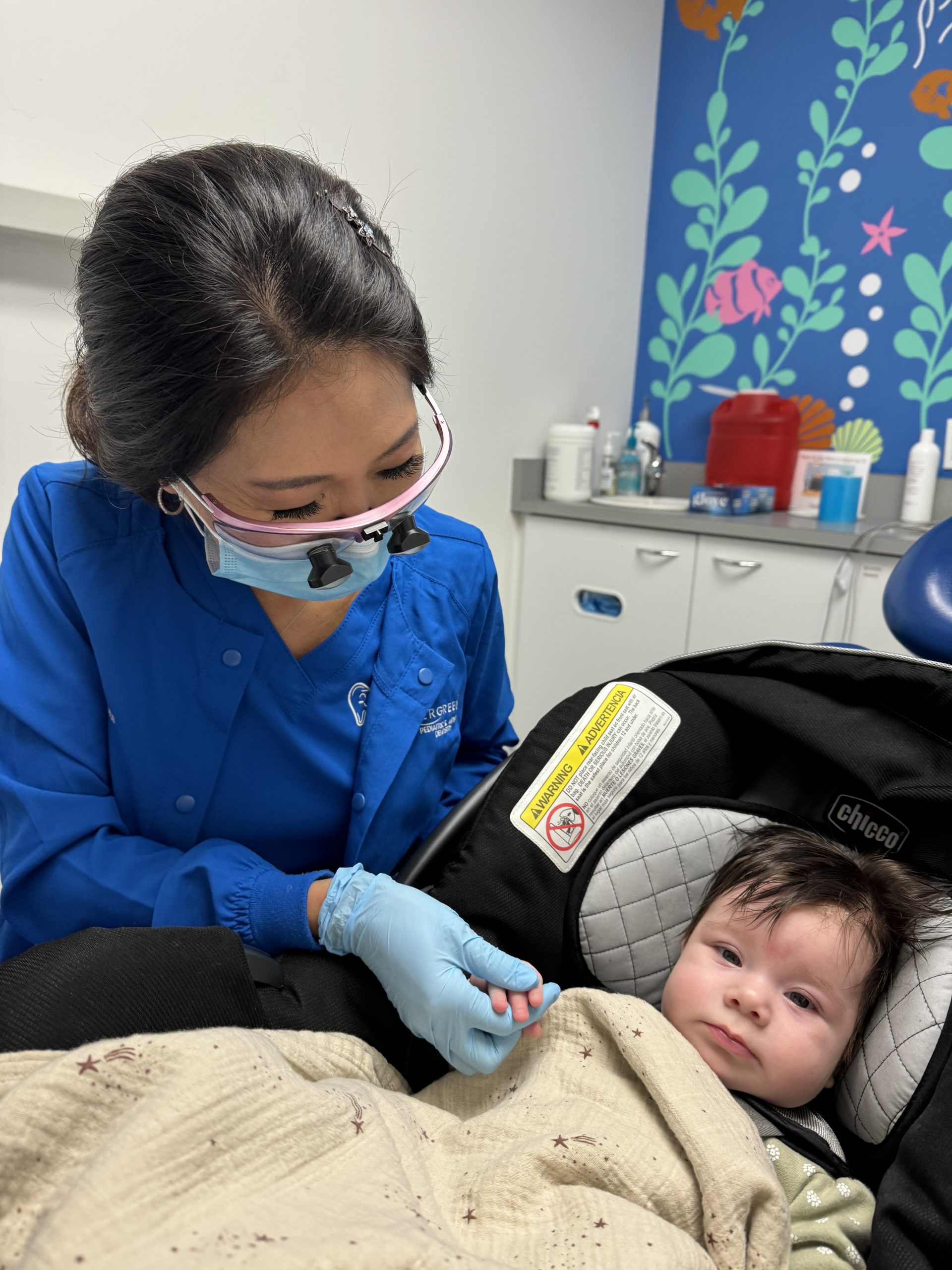Tongue-Tie in Infants and Kids: Myths and Facts Every Parent Should Know
Parents face countless decisions about their child’s health, and tongue-tie is one topic that often creates confusion and worry. With so much conflicting information online and varying opinions from healthcare providers, it’s no wonder many families feel overwhelmed when trying to understand this condition.
Tongue-tie, medically known as ankyloglossia, affects approximately 4-11% of newborns, yet myths and misconceptions continue to circulate. Some parents are told to “wait and see,” while others receive urgent recommendations for immediate treatment. This conflicting advice leaves families questioning what’s truly best for their child.
The growing awareness of tongue-tie in infants and kids has brought much-needed attention to this condition, but it has also led to misinformation spreading just as quickly as legitimate medical guidance. Parents deserve clear, evidence-based information to make confident decisions about their child’s care.
This guide separates fact from fiction, addressing the most common myths about tongue-tie while providing you with the knowledge needed to recognize signs, understand treatment options, and support your child’s healthy development.
What Exactly Is Tongue-Tie?
The Anatomy of the Frenum
Tongue-tie occurs when the lingual frenum—a small band of tissue connecting the tongue to the floor of the mouth—is unusually tight, thick, or short. This tissue normally allows for full tongue movement, but when restricted, it can limit your child’s ability to lift, extend, or move their tongue freely.
The frenum develops during pregnancy, and while every child has this tissue, not every child experiences functional limitations from it. Understanding this anatomical difference helps parents recognize that tongue-tie exists on a spectrum rather than being a simple yes-or-no diagnosis.
Different Degrees of Tongue-Tie
Tongue-tie severity ranges from mild to severe, with each level presenting different challenges. Mild restrictions might only slightly limit tongue movement, while severe cases can prevent the tongue from reaching the roof of the mouth or extending past the lower teeth.
Healthcare providers assess tongue-tie based on both anatomical appearance and functional impact. A child might have a visible restriction that doesn’t cause problems, or they might experience significant functional issues with a less obvious anatomical tie.
Lip-Tie and Beyond
While tongue-tie receives the most attention, other oral restrictions can also impact feeding and development. Lip-tie occurs when the tissue connecting the upper lip to the gums is tight or restrictive, potentially affecting breastfeeding latch and bottle feeding.
Some children experience multiple ties simultaneously, which can compound feeding difficulties and oral function challenges. Understanding these related conditions helps parents and providers take a comprehensive approach to assessment and treatment.

Tongue Tie Issue in Infants
Myth vs. Fact: “Tongue-Tie Always Fixes Itself”
Why Some Parents Wait
Many well-meaning healthcare providers suggest that tongue-tie issue in children will resolve on its own as children grow. This “wait and see” approach stems from observations that some mild restrictions may become less problematic as a child’s mouth grows and they develop compensatory movements.
The appeal of waiting is understandable—no parent wants to subject their child to an unnecessary procedure. However, this approach can sometimes delay important interventions that could prevent long-term complications.
The Truth About Persistence
Medical research shows that tongue-tie restrictions do not typically release or resolve without treatment. While children may learn to compensate for limited tongue mobility, the underlying anatomical restriction remains unchanged.
Compensation strategies, while helpful for some functions, can lead to muscle tension, inefficient movement patterns, and ongoing challenges that might have been prevented with early intervention.
Potential Long-Term Impacts
Untreated tongue-tie can affect multiple aspects of development, including feeding efficiency, speech clarity, oral hygiene, and even airway development. Early intervention often prevents these cascading effects and supports optimal development.
Children who receive timely treatment typically experience better outcomes than those who wait until problems become more established and harder to address.
Myth vs. Fact: “Tongue-Tie Only Affects Breastfeeding”
Bottle-Feeding Challenges
While breastfeeding difficulties often bring tongue-tie to initial attention, bottle-fed babies can also experience significant challenges. These may include gulping air during feeding, excessive gas or fussiness, unusually slow feeding times, or frequent milk spillage.
Bottle-feeding parents might notice their baby working extra hard to extract milk, becoming tired during feeds, or showing signs of poor weight gain despite frequent feeding attempts.
Speech and Oral Development
Tongue mobility plays a crucial role in speech development, affecting a child’s ability to produce clear sounds and articulate words properly. Children with untreated tongue-tie may struggle with specific sounds, particularly those requiring tongue-tip elevation like “t,” “d,” “l,” and “r.”
Beyond speech, restricted tongue movement can impact oral motor skills needed for chewing, swallowing, and maintaining proper oral posture. These effects can influence dental development and overall oral health.
Airway and Breathing Links
Emerging research highlights connections between tongue-tie and airway development. The tongue plays an important role in proper oral posture, and restrictions can contribute to mouth breathing, sleep disturbances, and related health concerns.
Children with untreated tongue-tie may develop compensatory breathing patterns that affect sleep quality, behavior, and overall well-being.
Myth vs. Fact: “Frenectomies Are Painful and Risky”
Modern, Gentle Techniques
Today’s tongue-tie treatment options are far more comfortable and precise than procedures used in the past. Laser frenectomy, in particular, offers significant advantages including reduced bleeding, faster healing, and greater precision in tissue removal.
Modern techniques focus on minimal tissue disruption while achieving maximum functional improvement, making the procedure much more comfortable for both infants and older children.
Quick Recovery in Infants and Kids
Most infants can feed comfortably within minutes to hours after a frenectomy procedure. The healing process is typically swift, with most children showing improved function within days to weeks.
Parents often report that their child seems more comfortable and feeds more efficiently almost immediately after treatment, indicating that the restriction was indeed causing discomfort.
Low Risk, Big Benefits
When performed by experienced providers, frenectomy procedures carry minimal risk while offering significant potential benefits. Complications are rare, and the functional improvements often far outweigh the brief discomfort of the procedure.
The key is working with a provider who has extensive experience in both assessment and treatment of tongue-tie, ensuring accurate diagnosis and skillful intervention.
Signs Parents Should Watch For
During Feeding
Common feeding-related signs include clicking or slurping sounds during nursing or bottle feeding, difficulty maintaining latch, frequent need for re-latching, or unusually long feeding sessions. Babies might also show signs of frustration during feeding or fall asleep frequently while trying to eat.
Mothers who are breastfeeding might experience persistent nipple pain, damage, or inadequate milk supply despite proper support and technique.
In Toddlers and Kids
As children grow, tongue-tie may become apparent through speech difficulties, particularly with tongue-tip sounds. Picky eating behaviors, difficulty with certain food textures, or challenges with oral hygiene might also indicate restricted tongue movement.
Some children develop noticeable gaps between their front teeth or show signs of mouth breathing and restless sleep.
Physical Clues
Visual signs include a heart-shaped tongue tip when extended, limited ability to lift the tongue to touch the roof of the mouth, or difficulty sticking the tongue out past the lower teeth. The tongue might appear tethered or pulled down when the child attempts to lift it.
These physical observations, combined with functional challenges, help providers make accurate assessments and treatment recommendations.

Tongue Tie Issue in Infants Treatment
Long-Term Benefits of Addressing Tongue-Tie
Better Feeding and Nutrition
Treating tongue-tie often leads to immediate improvements in feeding efficiency, whether breastfeeding or bottle feeding. Babies typically transfer milk more effectively, leading to better weight gain and reduced feeding-related stress for both child and parents.
Improved feeding mechanics also reduce issues like excessive gas, reflux, and feeding-related fussiness that can affect the entire family’s well-being.
Clearer Speech and Oral Function
Children who receive timely tongue-tie treatment typically develop clearer speech patterns and better oral motor skills. This early intervention can prevent the need for extensive speech therapy later and supports confident communication development.
Better tongue mobility also supports proper chewing, swallowing, and oral hygiene practices that contribute to long-term dental health.
Healthier Sleep and Breathing
Addressing tongue-tie can support better oral posture and airway development, potentially reducing mouth breathing and improving sleep quality. Better sleep contributes to improved behavior, learning, and overall health outcomes.
Early intervention may help prevent sleep-disordered breathing and related complications that can affect a child’s development and quality of life.
Evergreen Pediatric Dentistry: Gentle, Airway-Focused Care
Skilled Assessment and Diagnosis
At Evergreen Pediatric & Airway Dentistry, our experienced team provides thorough evaluations that consider both anatomical and functional aspects of tongue-tie. We understand that accurate diagnosis requires more than just visual examination—it requires assessment of how the restriction affects your child’s daily functions.
Our comprehensive approach ensures that treatment recommendations are based on your child’s individual needs rather than a one-size-fits-all approach.
Family-Centered Guidance
We believe parents deserve clear explanations and honest guidance about their child’s condition. Our team takes time to discuss findings, explain treatment options, and address your questions and concerns throughout the process.
You’ll never feel rushed or pressured into making decisions. Instead, we provide the information and support you need to make confident choices about your child’s care.
Collaborative Treatment
Tongue-tie treatment often benefits from a team approach. We work closely with lactation consultants, speech therapists, pediatricians, and other specialists to ensure your child receives comprehensive care that addresses all aspects of their development.
This collaborative approach maximizes treatment outcomes and provides families with ongoing support throughout their child’s growth and development.
Helping Parents Make Confident Decisions
Separating Internet Myths from Science
While online resources can be helpful, they can also spread misinformation that creates unnecessary anxiety or false reassurance. We encourage parents to rely on evidence-based information from qualified healthcare providers rather than conflicting online opinions.
Our team stays current with the latest research and clinical best practices to provide families with accurate, up-to-date information about tongue-tie and treatment options.
When to Seek an Evaluation
Trust your parental instincts—if you notice feeding difficulties, speech concerns, or other signs that worry you, seeking a professional evaluation provides valuable peace of mind. Early assessment allows for timely intervention when it’s most effective.
Even if treatment isn’t immediately necessary, understanding your child’s condition helps you monitor their development and make informed decisions about future care.
Peace of Mind for Families
Knowledge empowers confident decision-making. Understanding the facts about tongue-tie, recognizing the signs to watch for, and knowing that effective treatment options exist helps families feel prepared and supported.
Remember that seeking information and evaluation doesn’t commit you to any particular treatment path—it simply ensures you have the knowledge needed to make the best decisions for your child.

Tongue Tie Issue in Infants Treatment Service
Supporting Your Child’s Healthy Development
Myths and misinformation about tongue-tie can delay important interventions and create unnecessary anxiety for families. When parents understand the facts, they can make confident decisions that support their child’s optimal development and well-being.
Every child deserves the opportunity to feed comfortably, communicate clearly, and develop healthy oral function. Early recognition and appropriate treatment of tongue-tie can set the foundation for a lifetime of healthy habits and confident smiles.
If you have concerns about your child’s feeding, speech, or oral development, trust your instincts and seek a professional evaluation. At Evergreen Pediatric & Airway Dentistry, we’re here to provide gentle, expert care and the support your family deserves.
Evergreen Pediatric & Airway Dentistry
Dr. Susan Kim
12910 Totem Lake Blvd NE #103
Kirkland, WA 98034
(425) 814-3196
Get Directions on Google Maps
evergreenkidsdentist.com


